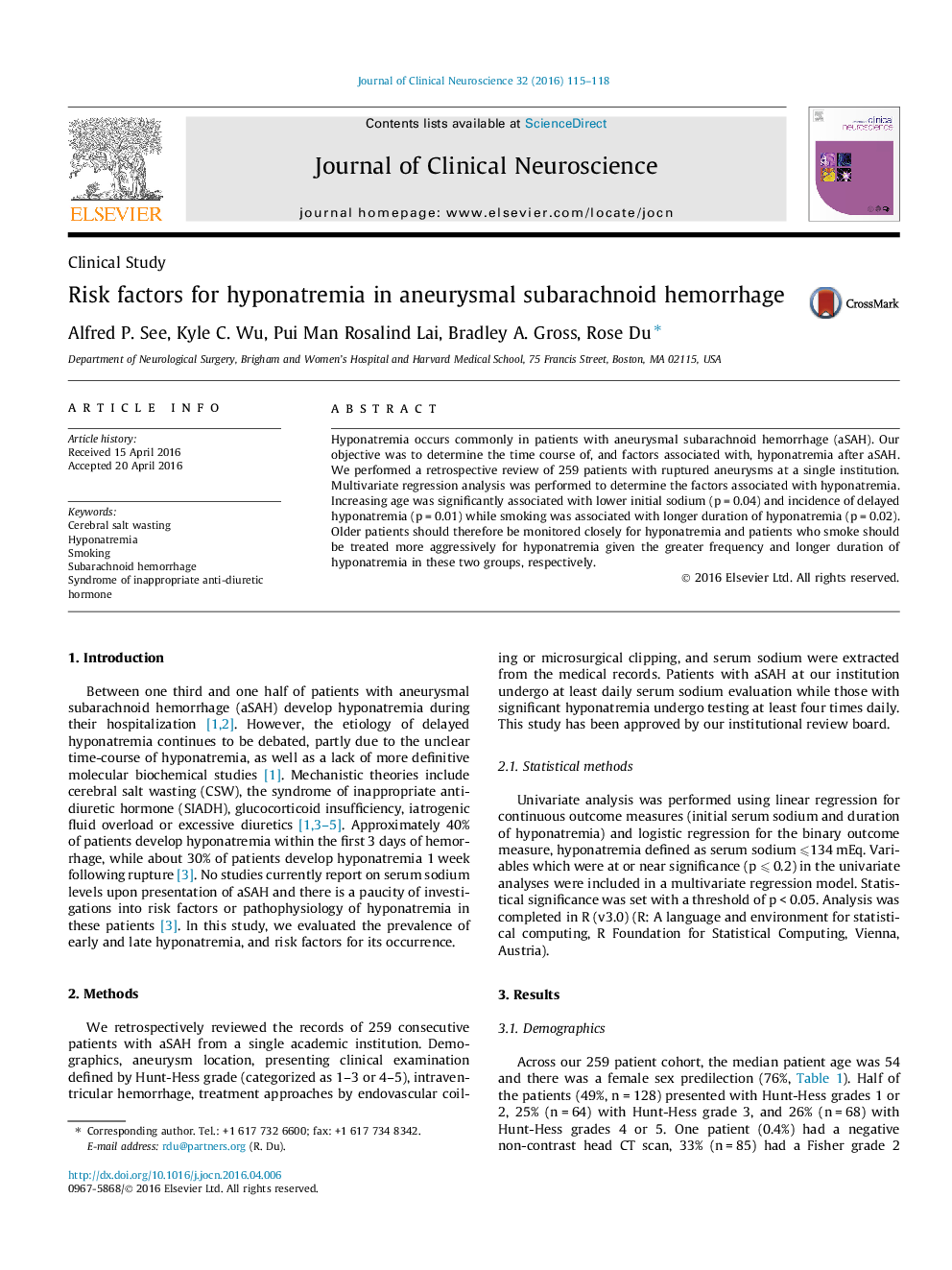| Article ID | Journal | Published Year | Pages | File Type |
|---|---|---|---|---|
| 3058055 | Journal of Clinical Neuroscience | 2016 | 4 Pages |
•Hyponatremia during initial presentation after aneurysmal subarachnoid hemorrhage is distinct from delayed hyponatremia.•Older patients are more likely to have early and delayed hyponatremia.•Patients who smoke may have hyponatremia refractory to treatment.
Hyponatremia occurs commonly in patients with aneurysmal subarachnoid hemorrhage (aSAH). Our objective was to determine the time course of, and factors associated with, hyponatremia after aSAH. We performed a retrospective review of 259 patients with ruptured aneurysms at a single institution. Multivariate regression analysis was performed to determine the factors associated with hyponatremia. Increasing age was significantly associated with lower initial sodium (p = 0.04) and incidence of delayed hyponatremia (p = 0.01) while smoking was associated with longer duration of hyponatremia (p = 0.02). Older patients should therefore be monitored closely for hyponatremia and patients who smoke should be treated more aggressively for hyponatremia given the greater frequency and longer duration of hyponatremia in these two groups, respectively.
